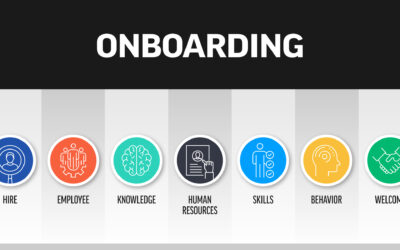Last week, we talked about how to gain support for a bill. This week, we will review the often-complicated process a bill must go through after it’s introduced in order to pass through both chambers of the state Legislature. While on the surface it seems easy enough, there are a lot of steps and moving parts, which is often why it is difficult to get a bill passed through both chambers and sent to the governor for his or her signature.
An overview
In a simple sense, there are 10 steps in the process a bill must go through to reach the governor’s desk. The bill must be:
- Introduced and referred to committee.
- Placed on committee agenda.
- Passed in committee and placed on chamber calendar.
- Aged on the chamber calendar.
- Placed on an active list in one chamber.
- Passed in that chamber.
- Referred to the other chamber.
- Placed on an active list in the second chamber.
- Passed in that chamber.
- Returned to the chamber of origin.
While this might seem simple enough, there are multiple, possible sub-steps and hurdles a bill might have to go through and overcome to pass both chambers of the Legislature. This 10-step process can become quite cumbersome and convoluted.
The details
After a bill is introduced and referred to a committee, it has to get on a committee agenda so the committee can vote on the bill. The sponsor must send a request to the chair of the committee of origin to put the bill on an agenda. Typically, a bill does not move without the sponsor’s approval. However, just because the sponsor asks for a bill to be considered does not mean the chair has to put the bill on an agenda. The chair can choose not to put a bill on an agenda for any reason, including if he or she does not like the bill or if he or she thinks it needs to be amended before going forward.
If the sponsor finds the chair unwilling to put the bill up for a vote—for whatever reason—there are ways that a member can force consideration of a bill, such as by submitting a request for committee consideration, often referred to as a 99. This is not often used because it can cause ill-will with the chair.
On this first path, a bill can be required to go to a second committee. For instance, anything dealing with the Penal Law must go through the Codes Committee, and if it deals with adjusting a fine, penalty, etc., then it’s likely that it will go through the Assembly Ways and Means Committee, as well. If a bill does not need to go through another committee, it goes straight to the chamber calendar to age in the Senate or to receive readings in the Assembly.
When a bill ages or receives readings—which is required by the New York State Constitution—it is essentially giving other senators and members of the Assembly time (three legislative days to be exact) to see and review the bill before it can be brought up in the chamber for a vote. First, the bill is on the first reading calendar. Then, the next day, it moves to the second reading, and finally to the third reading calendar, after which time the bill can be put on a chamber calendar for a vote.
It used to be required that bills be physically put on members’ desks for three days to age, but in the age of technology—in which all bills are available electronically—this practice has been eliminated. A bill can bypass the aging process if it’s accompanied by a message of necessity from the governor, or if it is ordered to the third reading calendar by the Rules Committee—something that often happens during the budget process to avoid the budget passing late. Also, this often happens toward the end of the legislative session when there are not enough days to let bills age or the committee wants a bill addressed quickly.
Just because a bill makes it to the third reading calendar does not mean the bill will be brought to the floor for a vote. The work we discussed last week—getting co-sponsors and support outside the Legislature from individuals and groups—still is needed to help convince the chamber leaders that the bill deserves a vote.
When a bill is put on the calendar for a vote in a chamber, it can be put on one of two different calendars: uncontroversial and controversial. The uncontroversial calendar has bills that should be able to pass a chamber without any debate or opposition, such as local tax bills, the renaming of highways, and the like. However, a member—usually of the minority party—can object to a bill being on the uncontroversial calendar. If this happens, the bill must be put on a controversial calendar to be considered by the chamber. This allows members to debate the bill, ask the sponsor questions and offer opinions for or against the bill.
Once a bill has passed one chamber, it is sent to the other chamber for consideration. Unlike in the first chamber in which the bill had to go through the committee process, a bill that is sent to either the Senate or the Assembly after the other chamber passes it, is put on that chamber’s legislative calendar immediately to age. Once this occurs, the bill can be brought up for a vote in the second chamber.
For instance, if the Assembly passes the windstorm definition bill, which has a same-as bill in the Senate, the bill would be sent to the Senate for consideration immediately. Because the Assembly passed the bill already, there is no need for the Senate version of the bill to go through the committee process, or for the Senate bill to have had any action in the Senate. Also in this case, the Assembly bill doesn’t have to go through the Senate committee process. The bill would be put directly on the chamber calendar on first reading. It would then need to age for three days before the Senate could take up the bill.
When the Senate takes up an Assembly bill and there is a same-as bill in the Senate, senators will substitute the same-as bill with the Assembly bill—even though the Senate version is identical—because both chambers must pass the same bill. If there is no same-as bill in the Senate, the chamber would just take up the Assembly bill. Once this occurs (either through the controversial or the uncontroversial calendar) the bill is returned to the Assembly, which will hold the bill until it is sent to the governor for consideration.
What happens next?
Now that the idea has become a bill, you have support and that support helped the bill pass both chambers of the Legislature, there is one final hurdle for a bill before it can become law: the executive. Next week, we will discuss the governor’s role in the process, which can be more than just signing or vetoing a bill.
Get involved
If you want to get involved with PIANY’s legislative and advocacy work, there are many ways to engage with the association:
- participate in PIANY’s District Office Visit Program;
- become a member of Agents Advocacy Coalition; and
- watch your PIA Northeast publications and PIA Northeast’s social-media channels for important New York updates, and share them with your followers.
See the full series
N.Y.: Part I: How an idea becomes a bill
N.Y.: Part II: We need your help: How to garner support for a bill
N.Y.: Part III: How a bill moves through the New York state Legislature
N.Y.: Part IV: The governor’s role in law making
N.Y.: Part V: Rule making and executive agencies

Katherine “Kat” Slye-Hernandez, Ph.D.
Katherine “Kat” Slye-Hernandez received her Ph.D. in political science from the State University of Albany, Albany, N.Y., in May 2020. She also has her Master of Arts from SUNY Albany and a Bachelor of Arts degree in Political Science and History from Elmira College, Elmira, N.Y.






